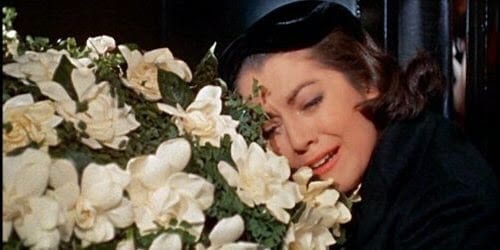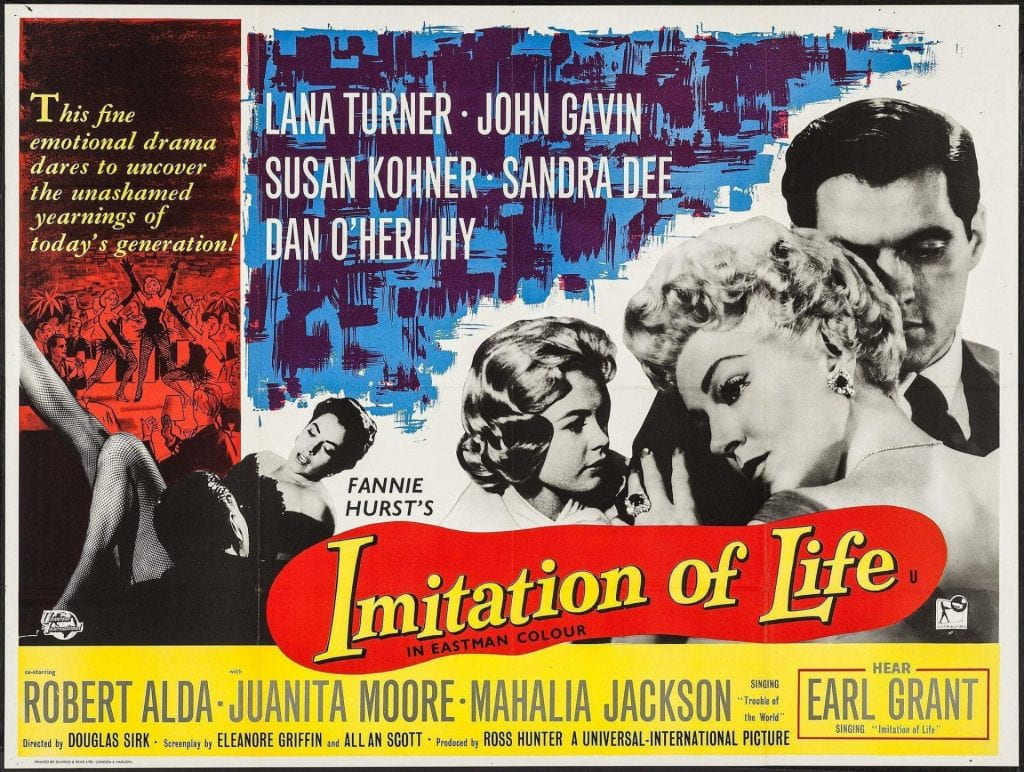
The dense and austere film melodramas of Douglas Sirk pose a problem of interpretation to their viewers, a problem which strikes me as being founded on cultural paradox and compounded by misleading appearances. Sirk, who began his artistic career as a leftist playwright in pre-Nazi Germany and who finished his career as a studio filmmaker in ‘50s Hollywood, was received by contemporary critics and even by his own producers as a conservative director who churned out commercial entertainments that endorsed conformist values. Later, this reputation was taken to task by countercultural figures like the German enfant terrible Rainer Werner Fassbinder, Sirk’s stylistic protégé, who argued for Sirk as a subversive ironist and a closet intellectual. While Fassbinder’s interpretative tradition carries some validity, I don’t find the subversive viewpoint especially helpful or instructive in approaching Sirk’s art. Much more alluring, from my perspective at least, is this statement that the critic Andrew Sarris makes in his seminal auteurist film studies text The American Cinema: “The essence of Sirkian cinema is the direct confrontation of all material.”
Sarris’s critical assertion gets at the core of a particular feeling that I can’t seem to shake when I’m engaging with Sirk’s films, a feeling that there’s almost always a distinct break between the narrative progression of the film, which is told to us primarily through the script and the performances, and the means through which we as viewers absorb that narratological information, meaning Sirk’s rigorous formalism (which is shown to us through the particularly angular qualities of Sirk’s images: his staging, lighting and directorial cadences). In other words, Sirk uses the spatial language of mise-en-scene to confront or comment on the actions and ideas that the film seems to be endorsing in a more abstracted space. Rather than functioning as an act of stylistic subversion, which is characterized by the wholly rebellious and sometimes uncomplicated contradiction or reversal of a presented ideology, Sirk’s formalism bares more relation to a kind of quasi-Brechtian distanciation, which carries a greater degree of plurality in its meaning and effects than subversion does. A key example of this creative strategy can be observed during the final moments of Sirk’s scorching 1959 masterpiece, Imitation of Life.

Sirk’s final film, Imitation of Life belongs to an archetypal genre known as the “tragic mulatto” in that it details the plight of a character of mixed racial descent, and the intense personal trauma that arises from existing outside of a social world governed by biracial divisions. In this case, the “mulatto” figure at the film’s anguished center is Sarah Jane (Susan Kohner), the white-passing daughter of Annie Johnson (Juanita Moore). Early on, Annie and Sarah Jane are taken in by an aspiring actress, Lora Meredith (Lana Turner), and as Lora’s star gradually rises over Broadway, Sarah Jane’s frustration over her own racial identity develops into a volatile disruption of character. During the film’s third act, Sarah Jane all but disowns her black mother as a means of violently breaking with the past and claiming a white identity. The inherent tragedy of the material reaches its apotheosis during the ultimate death and subsequent funeral of Annie.
The notion of race relations in the US functions as more than a remote subtext here; the film is engaging with the social fabric of twentieth century America in a very real way. Nonetheless, Sirk abstracts these socioeconomic details beneath layers of artifice. His approach is to distance himself (and, by extension, us as viewers) from the implications which underline the material. Case in point: during the funeral procession that closes the film, we see masses of Annie’s hitherto unseen friends line the streets in mourning, and Mahalia Jackson sings a powerful rendition of “Trouble of the World.” The emotional territory of the film’s narrative reaches a fever pitch in intensity as we witness Sarah Jane appear and run toward her mother’s casket which is being taken away down the street; she cries out to her mother, screaming apologetically that she has “killed her.” Sirk then defamiliarizes us from our surroundings by slowly backing up his camera away from this tumultuous scene, eventually stopping behind a handsomely dressed window in what appears to be a darkened toy store. Suddenly, the audience becomes removed from what’s happening in the narrative; a screen of chilly modernism has been strategically placed between us and Sarah Jane’s violent grief. The inner world of psychology and emotion becomes superseded by the material world of surfaces and appearances.

This is strange work of the highest order. Almost any other director would choose to linger, up close, on the morbid reunion at the film’s climax in order to more effectively draw out the emotional beats present in the script. Instead, Sirk renders these final moments of closure cryptically inaccessible by displacing them into a mysterious space, one that is tantalizingly out of our reach as an audience. In this way, Sirk’s formalism denies us of a proper release, thereby withholding pleasure from us at a crucial moment. This decision is brilliant because it reinforces, on a visual level, the film’s thematic current which is related to appearances and surface images: Sarah Jane’s problematic social identity arises from a painful discrepancy between the way she looks versus self-consciousness of her racial background. Sirk structures a magisterial dialectic between performance and image, narrative and approach; it’s this dense and intellectually-demanding conception of film melodrama that makes his richly paradoxical art reward close attention and repeated viewings.

Imitation of Life screened at the IU Cinema last month, on a particularly inspired double bill with Fassbinder’s The Bitter Tears of Petra von Kant (1972). Fassbinder’s most overtly Sirkian text, Ali: Fear Eats the Soul (1974), screened on February 14 at the Cinema as part of their ongoing 5X series dedicated to the New German Cinema auteur.

Jack Miller enjoys the films of Howard Hawks, Jacques Tourneur and John Ford. He studies literature, and has been a habitué of the local film revival scene since he moved to Bloomington a few years ago. He also enjoys listening to country and disco music.